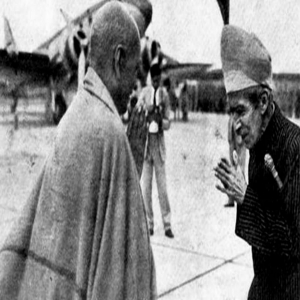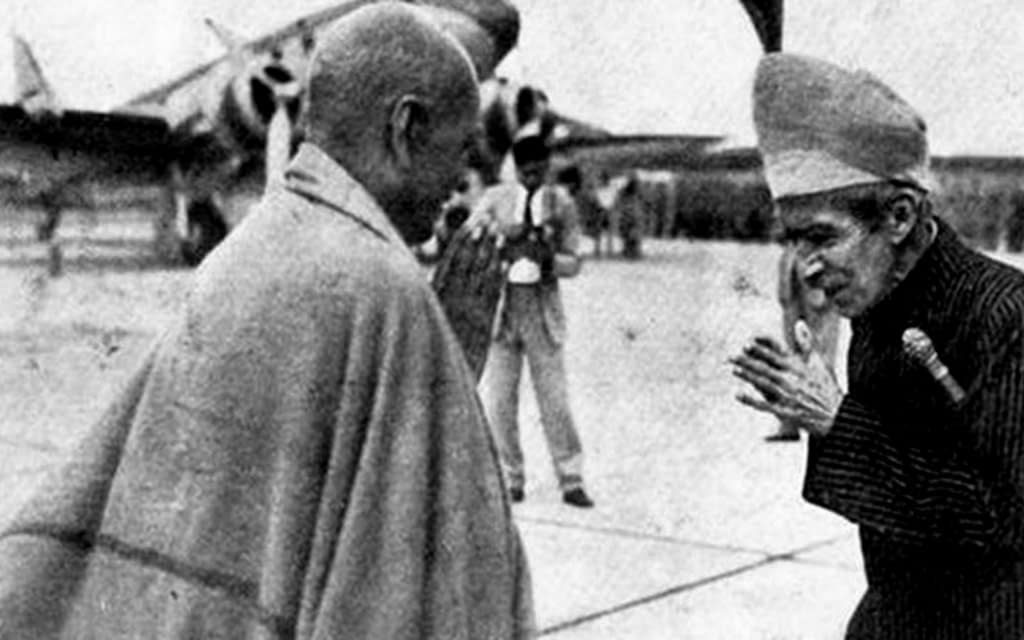
.png) Ram Puniyani
Ram Puniyani

The princely state of Hyderabad merged with India on September 17, 1948, through what is called a police action, actually done by the Indian Army. It was called Operation Polo, and General Chaudhary led the operation. In its memory, the BJP started celebrating Hyderabad Liberation Day, while the Congress-led Government of Telangana celebrated it as Praja Palan Day (Advent of Democracy Day). BJP leader Kishan Reddy stated that not celebrating it as a Hyderabad Liberation Day is an insult to the people who sacrificed their lives during the merger through army action to India.
Others label it as the Islamophobia of Nehru and Patel, which led to the annexation of a Muslim Princely state into India. Most of these arguments are either one-sided or biased in one way or the other. Can a Princely state ruled by a Muslim king be called a Muslim State (Hyderabad)? The majority of its population was Hindu. Can a Muslim-majority state ruled by a Hindu King (Kashmir) be called a Hindu state?
While some scholars see this through the eyes of religion, the core factor was geographical on the one hand and the transition away from the feudal system towards democracy on the other. How much of that could be achieved in Kashmir is a matter of doubt as factors in that region were mired by the ambitions of neighbouring Pakistan, who de facto wanted to build a Muslim state and regarded a Muslim majority Kashmir to be in Pakistan as per Jinnah's "Two Nation theory." This theory was originally put forward by Savarkar anyway.
So why did Nehru take an interest in Kashmir's accession to India? Was it mere geographical expansionism or to support the democratic movement against the feudal kingdom? Sheikh Abdullah, with his democratic aspiration, first converted the Muslim Conference into the National Conference and stood for secular values. He looked up to Gandhi and Nehru for secular-democratic values. The problem was vitiated by Pakistan's aggression, which was called a tribal one but was led by the military and supported by the US-UK from the back.
Then there is the issue of sovereignty. Kings and many others labelled kingdoms through the religion of the Kings, while Indian Nationalists regarded that sovereignty belonged to the people, not to the kings. Against this background, the complex problem of Hyderabad's merger into India must be seen.
As India became Independent, the Princely states above 600 could merge with Pakistan or India or remain independent. Princely states, who had some autonomy during British rule, were now facing a dilemma, but most wanted to stay independent. They were advised by Lord Mountbatten preferably to merge with the neighbouring country. With Sardar Patal overseeing most mergers, he promised to give the princes relative autonomy in most matters, barring defence, communication, and external affairs. In turn, they were given the right to keep their massive property and wealth. Most of the princely states finally merged with India. After lots of hesitancy, Travancore, ruled by a Hindu king, also agreed to be part of India. The Raja of Kashmir, Harisingh, refused to merge with India and Nizam of Hyderabad also did not agree to merge with India.
As pointed out above, Indian leaders regarded sovereignty as the people's characteristic, not the king's. Most of these kings were loyal to the British and had a life of luxury. Junagadh was integrated with India through military action and, in the plebiscite which was held after that, endorsed its merging with India. Nizam of Hyderabad was sitting over a large and rich state. He wanted to remain independent or merge with Pakistan. The idea of a merger with Pakistan was not on religious grounds but because Mohammad Ali Jinnah promised that Nizam's rights would not be disturbed.
India was keen on merging Hyderabad into India for multiple reasons, Islamophobia not being any of them. The main ground was the geographical location of the state of Hyderabad, right within the centre of India. A landlocked autonomous state or a part of Pakistan would have been the source of perennial problems. This was the core consideration for the Nehru-Patel duo. A standstill agreement (November 1947) was signed with Nizam until the final decision was made. The idea was that this period should be used to democratise the Hyderabad administration so that negotiation would be easy. Nizam used this time to strengthen his army by increasing the number of its irregular force called Razakars, which was led by Major Gen SA El Edroos, the Arab commander-in-chief of the Hyderabad state forces.
The Congress meanwhile launched a Satyagrah to demand for democratisation of state administration. 20,000 of these Satyagrahis were jailed. Due to the state repression and Razakar atrocities against Hindus, many of the people fled the state. Also, the communists had launched the dalams (groups) against the landlords for land redistribution and to protect the people from Razakar's atrocities. Nizam was dragging the negotiations, and Razakars became more menacing. The Nizam struggle had a good deal of support from some locals and a number of Muslims from the whole country.
The same source tells us that Patel Joyfully wrote to Huseyn Shaheed Suhrawardy, a pioneer of the Bangladesh independence movement and the mentor of Bangladesh's founding leader Sheikh Mujibur Rahman, "On the question of Hyderabad, the India Union Muslims have come out in the open on our side, and that has certainly created a good impression in the country". It is in this background that the military action was unleashed, in which, according to the Sunderlal Report, nearly 40,000 people (mainly Muslims) lost their lives.
History is very interesting as to which aspects we pick up to build our narrative. The narratives by many scholars focus on religion to show that this was Islamophobia on the part of Indian leadership. The two main aspects of the whole episode are seen in its complexity. The first one clearly shows the geographical consideration aimed to nip future problems. And the second one was democratisation and anti-landlordism aimed at by the local dalams of Communist party. The criticism of the Indian leadership of Nehru and Patel on the issue is a one-sided and biased attempt to tarnish their aspiration, which might not have been fully fructified.